Proportional Calculator Webapp

Webapp’s QR code to scan with phone.
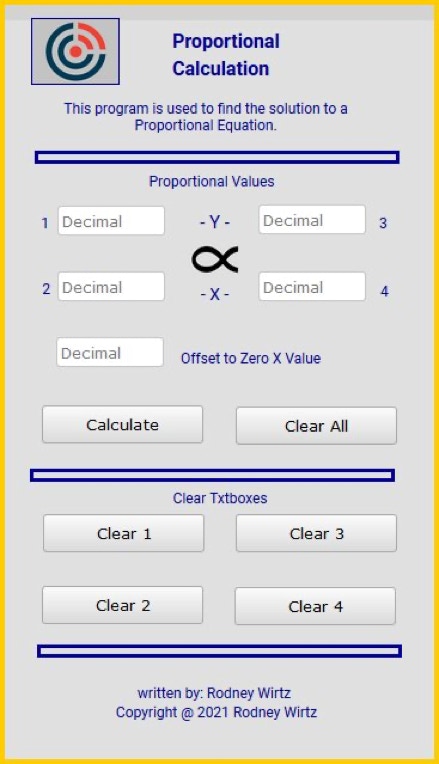
Explanation:
This Proportional Calculator is handy to use for Proportion Relationships / Proportional Calculations are often encountered in our daily work. Whenever there is a linear relationship (meaning a straight line relationship), we can use the proportional calculator to arrive at our answer. There are a number of these calculators on the web. This is what they typically look like:
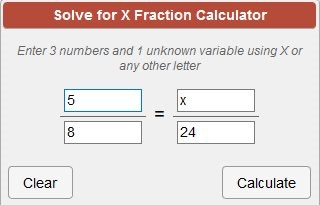
The meaning of how this exactly works is a little vague on the web. The straight-line relationship starts with a point at the 0,0 point on the graph. Another point is placed on the at x = 8 and y = 5.
We now have two points on the graph and these two points define a straight line on the graph. To find the y value when the x value equals 24, we mark the x axis at 24, go up the graph and turn left at the line and go to the y axis. The line intercepts the y axis is the solution to the x value above. (Don't get the x's and y's mixed up with the variable x they used in their example.)

This is how all proportional relationships work. The important point is that you must have two points to define the straight line in order to solve for the values of the third point.
Here is a screenshot of my webapp to solve this problem:
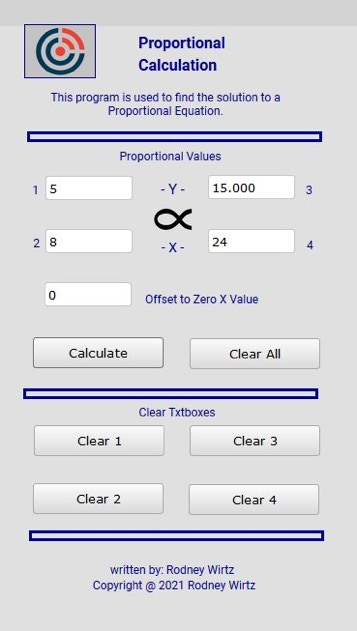
The answer is 15.
----------------------------------------
Now let's look at a case that no one talks about (I do of course...).
How about a situation where the starting point is not at the 0,0 point on the graph.
We use this relationship a lot in our electrical calculations. For example, we are installing a temperature transducer on a piece of equipment where the output is 4 milliamps (ma) at 0 C and 20ma at 100 C. Given a 12ma signal, what is the associated temperature?
Here is a graph of the situation:
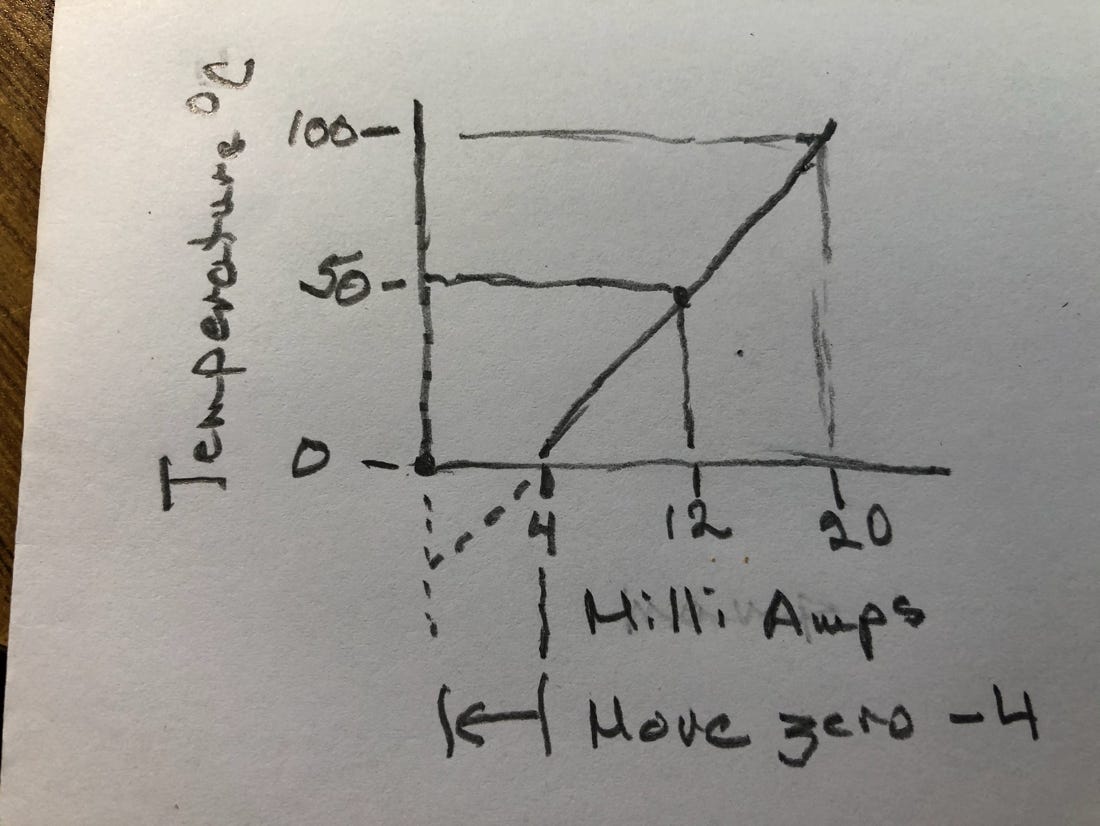
We can Not use the regular proportion relationship for this situation for the starting point is not at the 0,0 point. To readjust our graph and calculations, the zero point has to be translated to the 0,0 origin. In my webapp, I have included an offset calculation so that we can compensate for situations where the zero has been translated (moved) along the x axis. In this case, the zero has been moved 4ma units to the right (positive direction). To compensate for this translation, the zero is moved back -4 units to the zero point. This is the offset value entered into the Offset txtbox. Here's the screenshot:
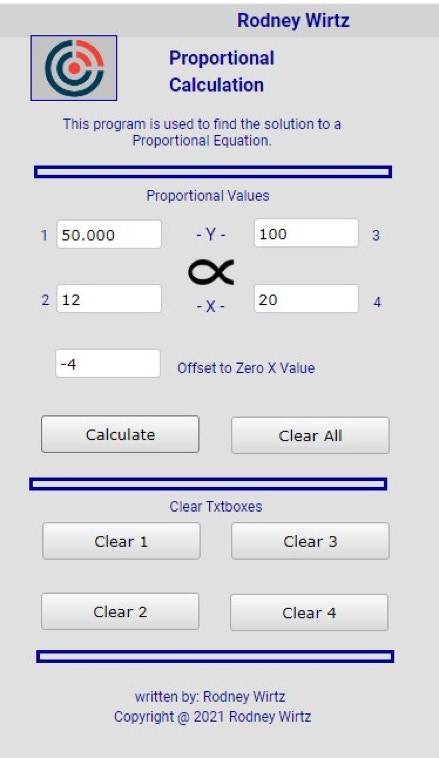
So the values enter are, -4 the zero translation, 100 C @ 20ma for the given endpoint. The webapp calculates the temperature for a 12ma signal, which is 50 C.
Just remember to enter the lower x value on the left and the higher one on the right.
